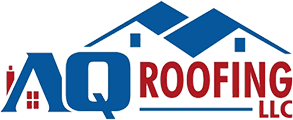As a homeowner, you must keep your roof in condition to ensure its longevity and performance. However, many factors can compromise its health and shorten its lifespan.

1. Trees
If there are nearby trees in your home, take caution. Branches may grow too close to your roof and scrape shingles loose over time. In the worst-case scenario, branches and leaves may build up on your roof and trap moisture, leading to leaks and other moisture issues. In extreme storms, branches may fall on your roof and cause further damage. As soon as you see branches already touching your roof, have them trimmed back as soon as possible.
2. Gutters
Healthy gutters mean a healthy roof. However, they can be prone to clogging, with leaves, pine needles and other debris collecting inside the gutter troughs. These can cause water runoff to back up your roof and seep through the shingles, leading to leaks and damaged underlayment and decking. While you can prevent these issues with regular gutter cleaning, many gutter installation professionals recommend investing in a gutter screen for better protection against clogs. Such a system allows only water runoff to enter your gutters, keeping the clogs out. This allows for more extended periods between cleaning. Even with a gutter screen, you need to keep your gutter clean to ensure water flows smoothly.
3. Weather
Inclement weather conditions can wreak havoc and shorten the lifespan of your roof, too. Strong winds can take out a handful of weak shingles and even rip off an entire row. Hailstones, meanwhile, can penetrate the outer granulation of the shingle upon impact, weakening the material as time passes. In either situation, you need to contact a professional roofing company as soon as possible. They will inspect your roof for any signs of damage and perform the necessary repairs, from replacing missing shingles to resealing damaged flashings.
4. Algae
Constant exposure to moisture can cause algae to form on the roof surfaces. It’s more than just an aesthetic issue – as algae forms, the enzymes can digest your shingles’ protective granules. It can even push the shingle edges around and create gaps for leaks. To limit moisture exposure on your roof, you should clear nearby trees away. This will decrease the chances of mold, moss, and algae thriving on your shingles. If you already have algae on your roof, try spraying your roof with a 50% bleach and water mixture, and rinsing it with clean water. Avoid using a pressure washer or scrubbing the shingles.
For all your residential roofing needs, get in touch with AQ Roofing LLC. We provide top-quality storm damage restoration services and more. Give us a call at (501) 951-1683, or fill out our online contact form to set an appointment.
